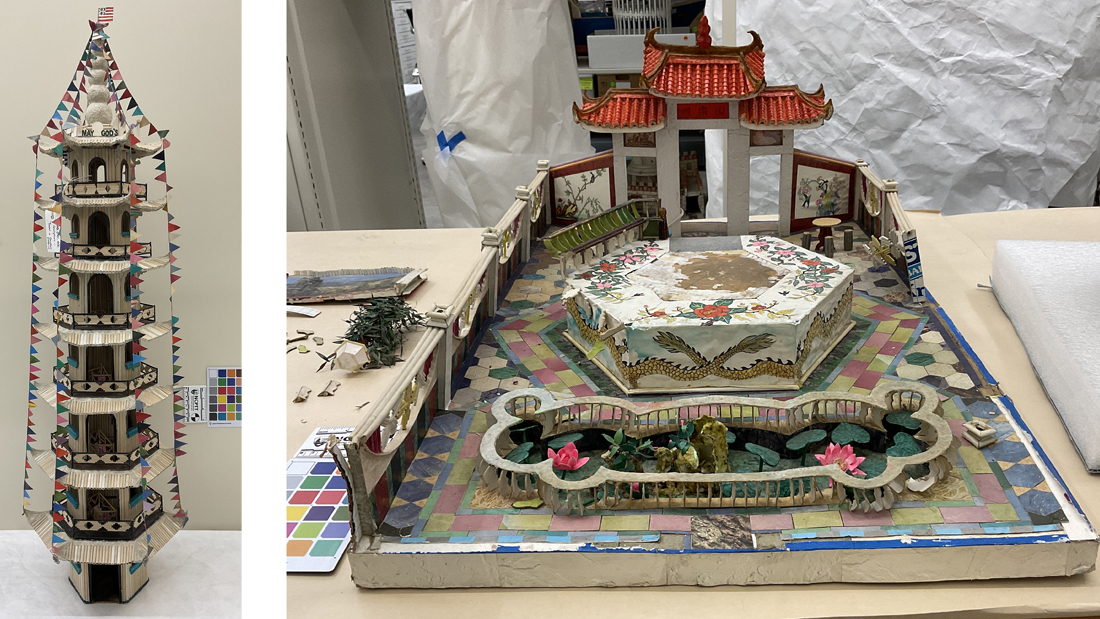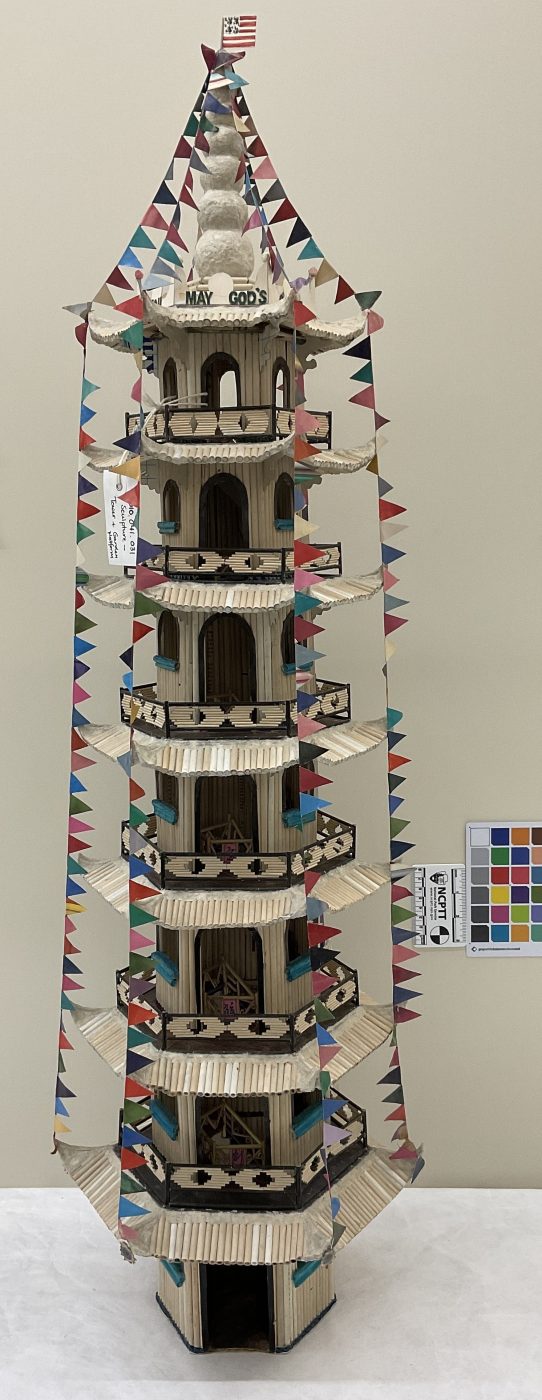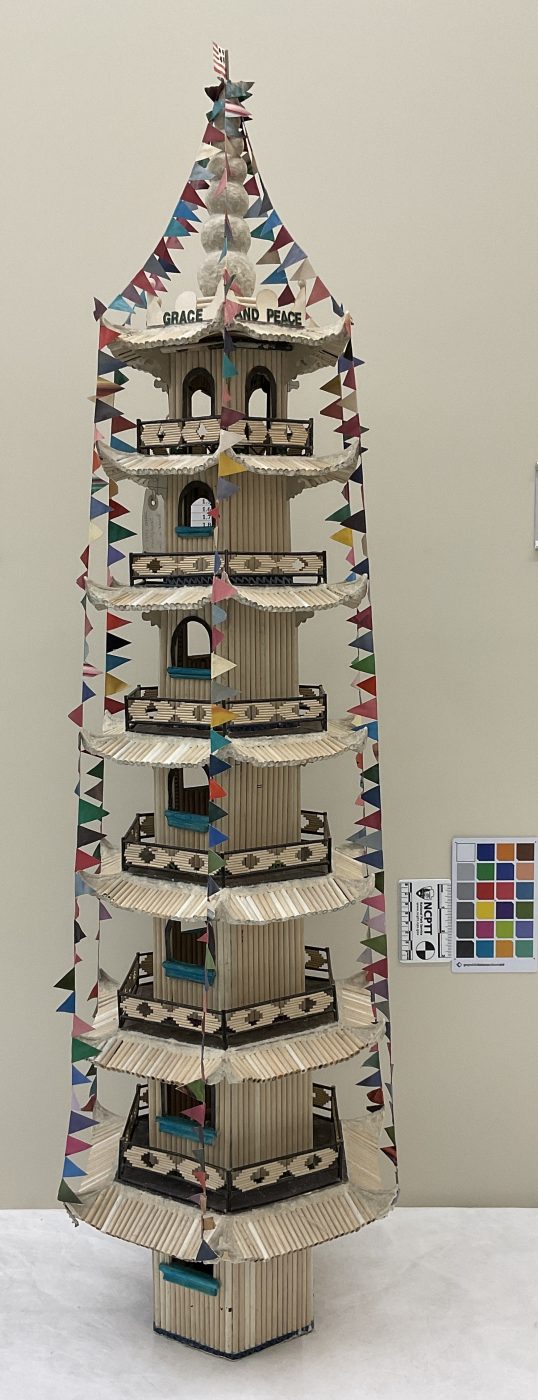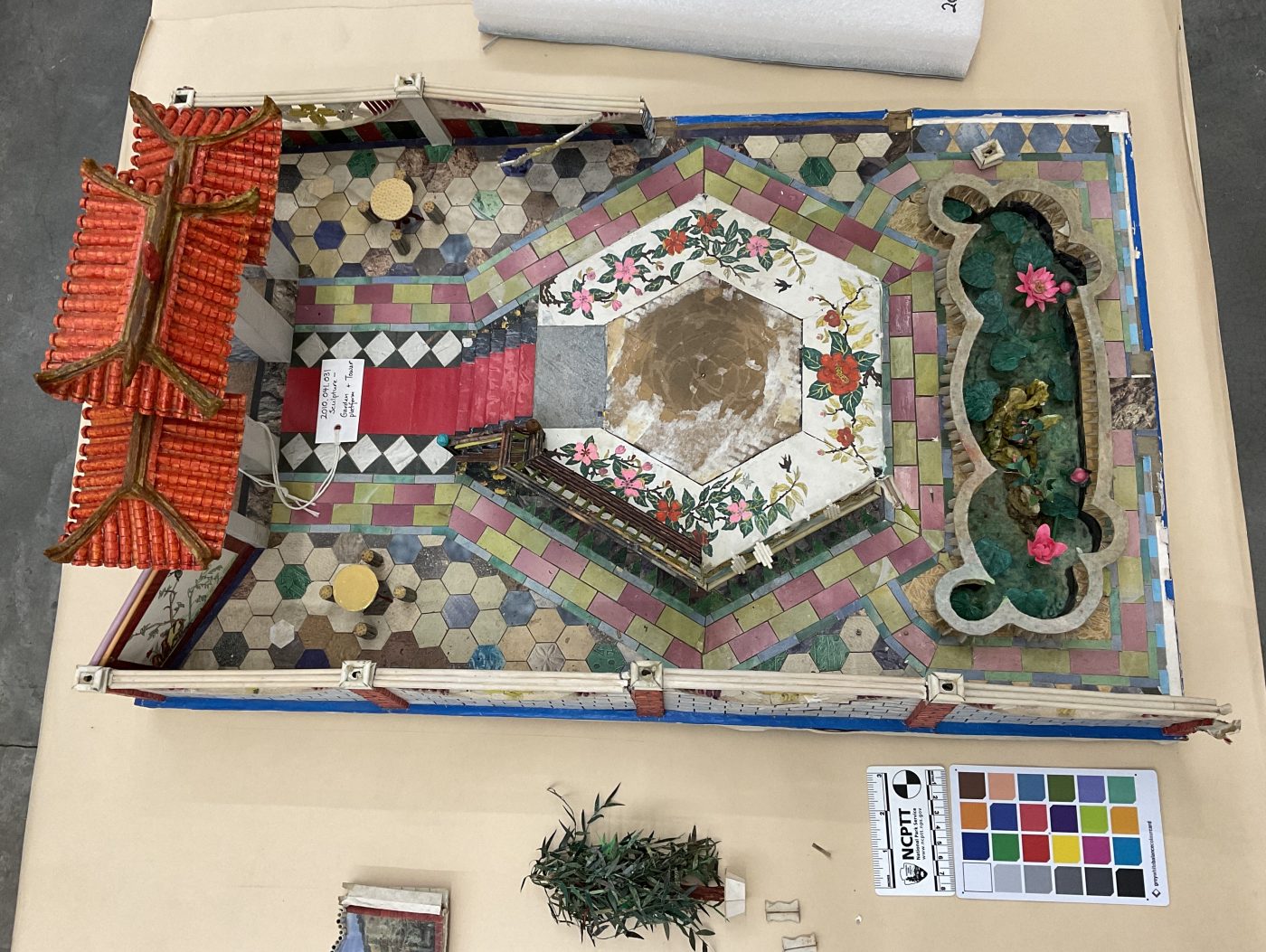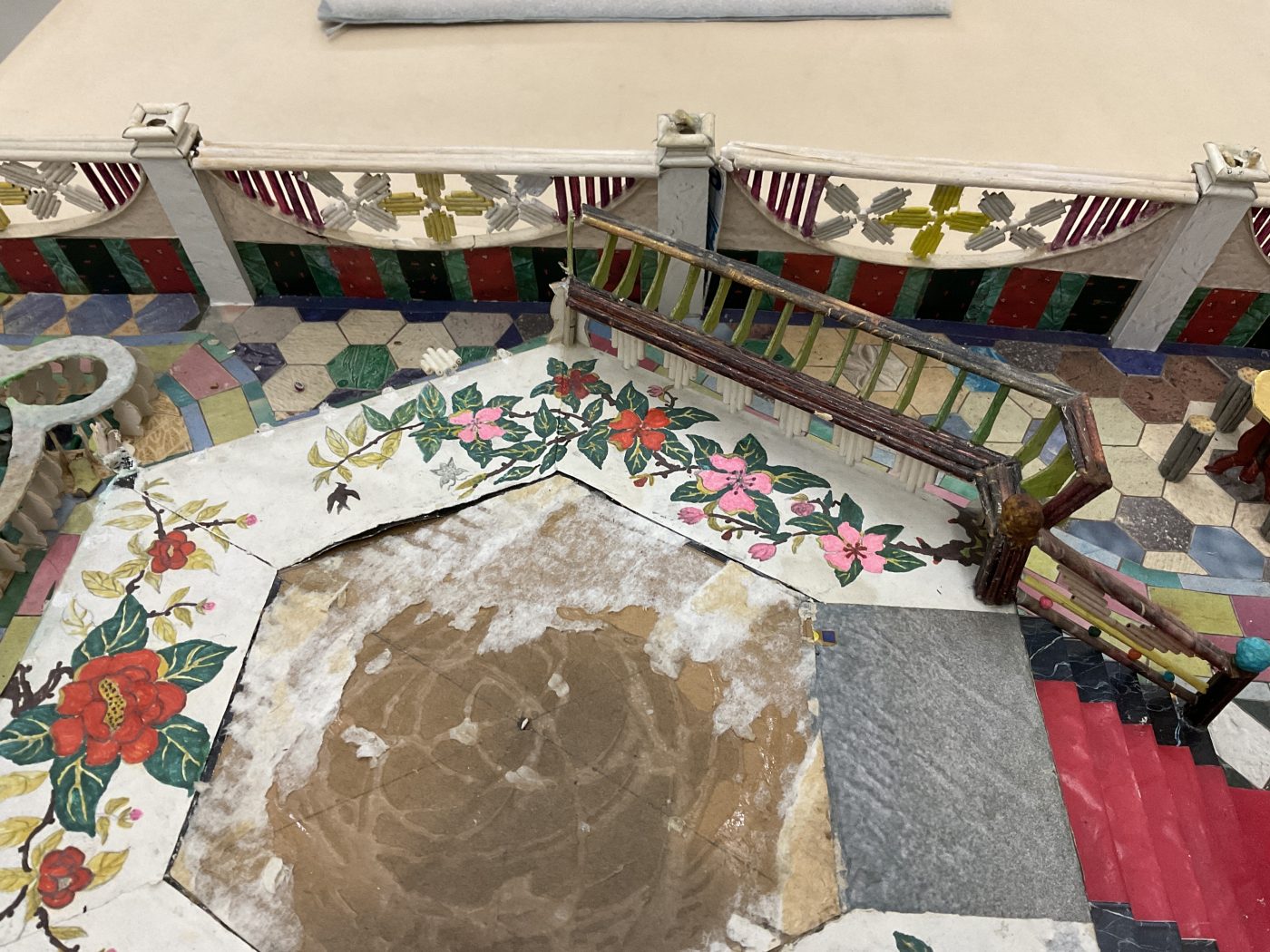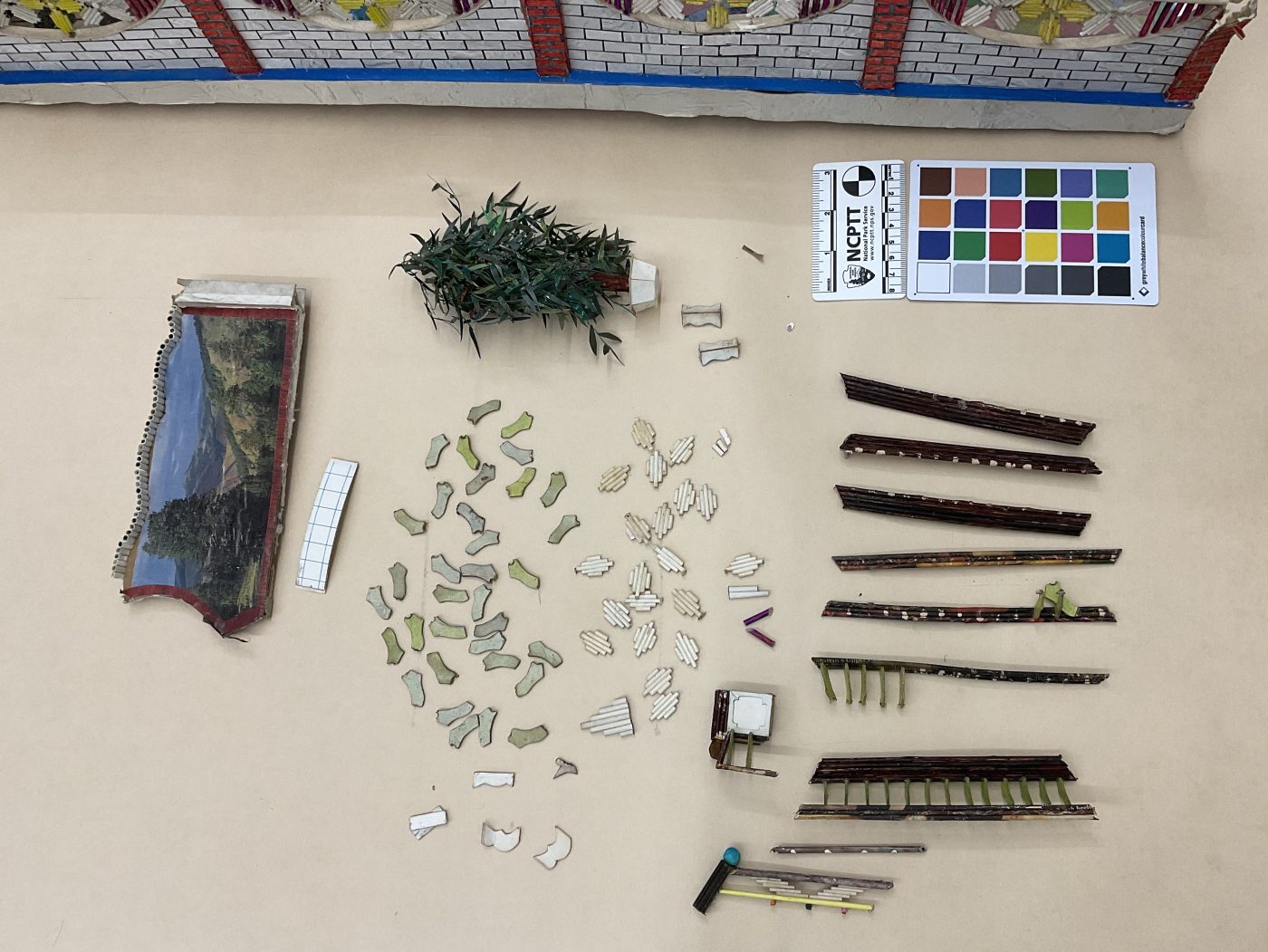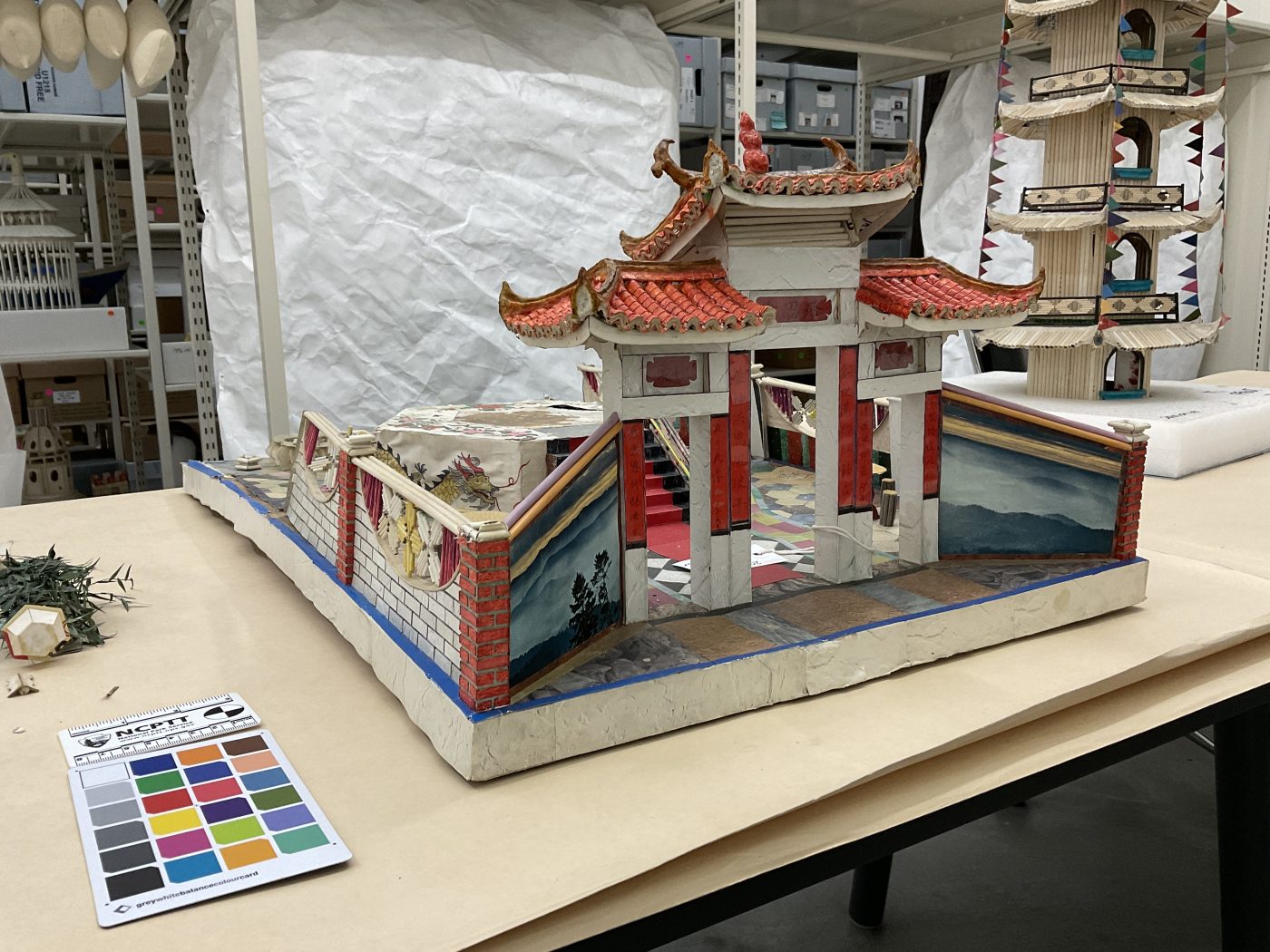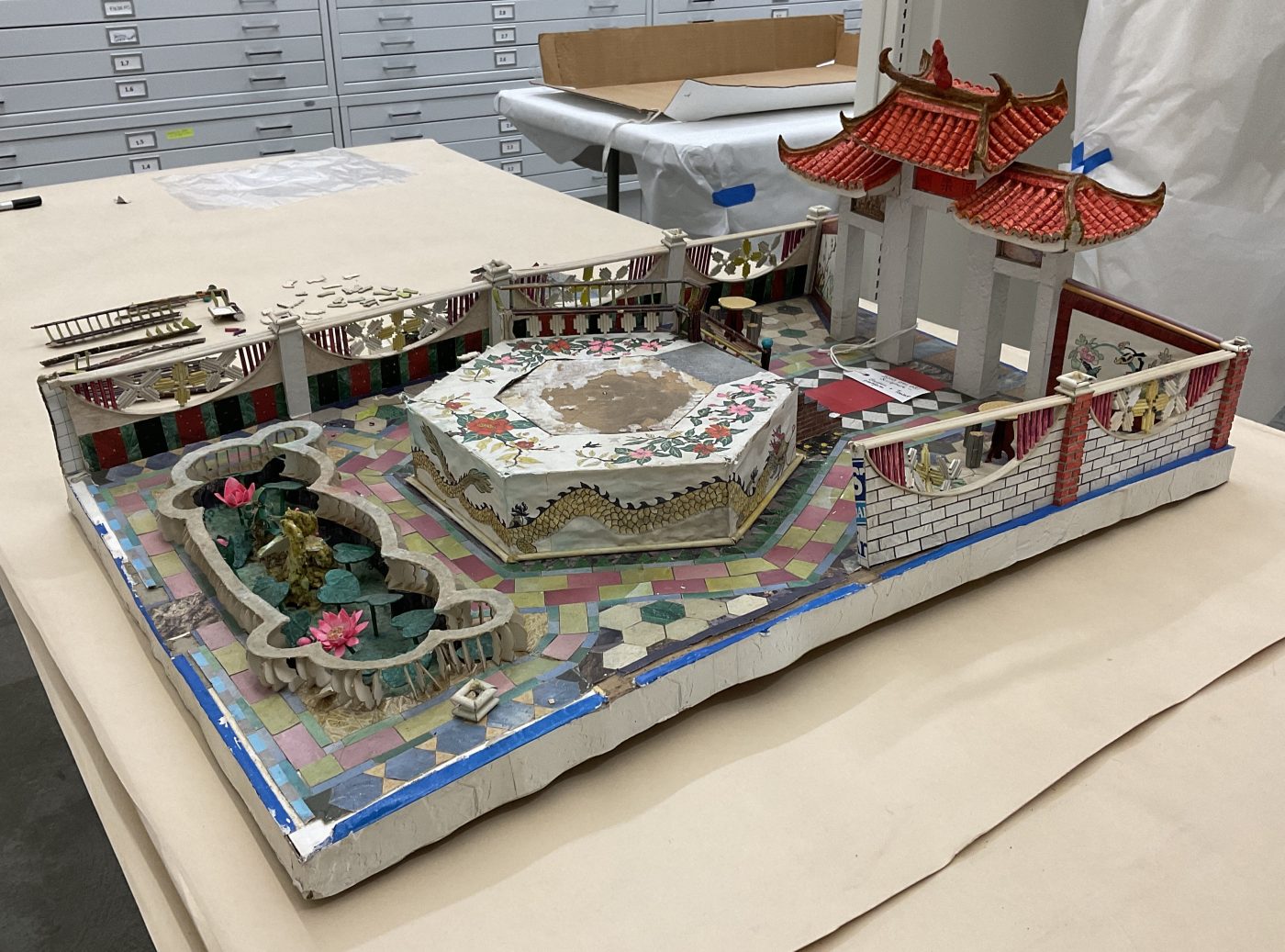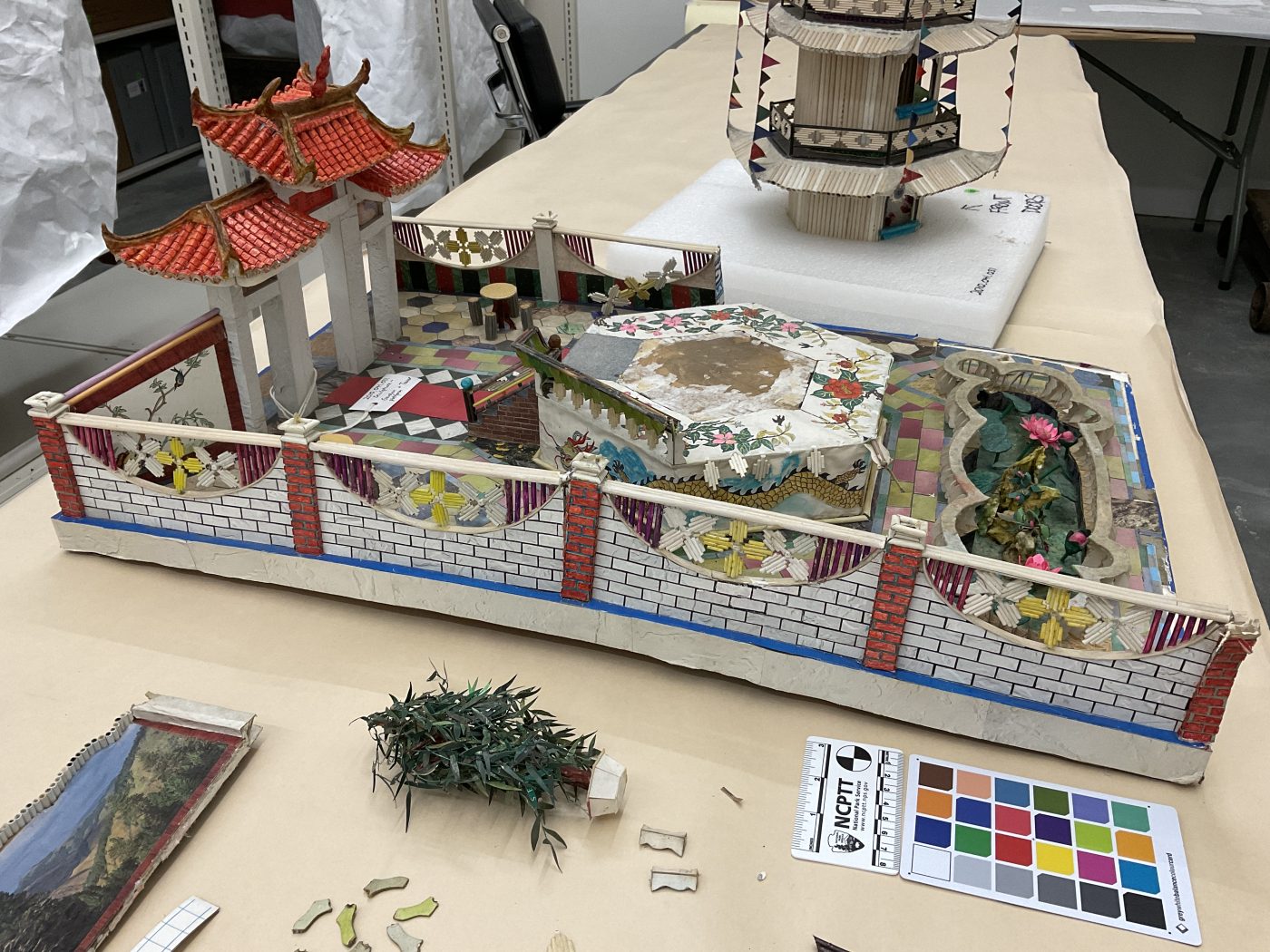This intricately detailed hexagonal pagoda tower and Chinese garden is a sculpture made entirely out of paper by a refugee of the Golden Venture while detained at York County Prison in Pennsylvania. The pagoda design, a temple structure associated with Buddhism, and the pond of blooming pink lotuses, Buddhism’s most recognizable symbol for purity and enlightenment, is subtly blended with a small American flag and a monotheistic, possibly Christian, blessing inscribed along the top of the tower which reads: “May God’s Grace and Peace Be With You.” MOCA does not know the name of the artist and therefore can only speculate as to their intention in mixing these elements in this particular piece. Given that some Golden Venture refugees applied for asylum from persecution on the grounds of being Christian, it is possible that it is a self-representation of being Chinese and Christian and a commentary on the religious freedom that allowed them to be both openly in the U.S. but not in China. Or, it might simply be a blessing that the artist thought suited to the recipient of the sculpture.
The artist of this piece was one of among 286 Chinese, mainly from Fujian Province, who were caught and arrested while attempting to be smuggled into the U.S. on June 6, 1993, after their ship, the Golden Venture, run aground at Rockaway Beach in Queens. Survivors of the shipwreck were subsequently detained in prison without the possibility of bail, some for as long as four years. To stave off deportation, some petitioned for political asylum as Christians, democracy activists, or potential victims of forced sterilization under the system set up by the United States Refugee Act of 1980. But as their cases dragged on for years, making papier-mâché and folded paper sculptures out of magazines, toilet paper, and other materials available to them in prison became a way to pass the time and create thank you gifts for pro bono lawyers and other supporters assisting them with their asylum cases. Paper—along with the art of using paper to create 3-dimensional objects, or papier-mâché—was invented in Han Dynasty China circa 202 B.C.- 220 A.D. Despite their best efforts, in the end, only thirty people were granted asylum; 110 were actively deported.
We would love your support to repair this unique piece from MOCA’s Fly to Freedom Collection, which helps MOCA tell the Golden Venture refugees’ stories and reflect on immigration and continuing racial and economic inequalities.
